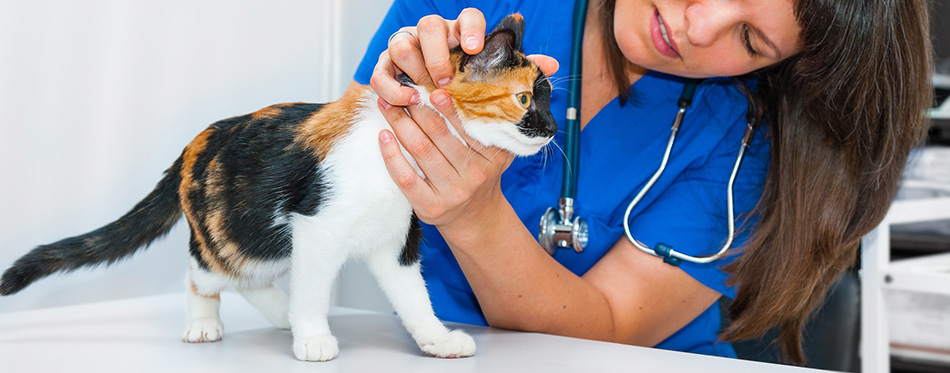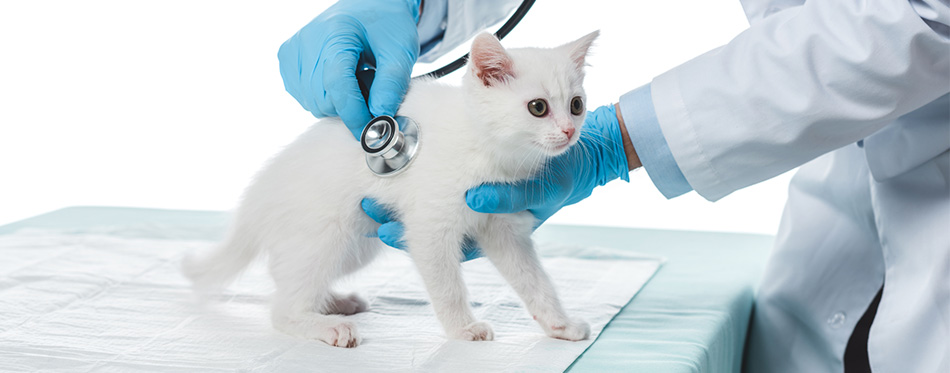Like any other pet, cats need to visit their veterinarians on a regular basis. This is to help ascertain that it is at the peak of its health. Regular veterinary visits can also help manage risk factors that can contribute to diseases in cats. In general, however, cat parents have to look at regular vet visits as a chance to ensure that their kitty is in tiptop shape. This can also help validate pet parents’ belief that they are taking good care of their respective cats. One question remains, however. How often should pet parents bring their indoor cat to the vet?
There are no straightforward answers as to the frequency of vet visits for cats. Everything depends on some factors such as age, preexisting medical condition, and others.

Kitten Care: The First Year of Life
A typical healthy kitten under the age of 1 year will visit the vet at least 5 times. This can increase, of course, depending on various circumstances that can affect its health and wellbeing.
The very first vet visit by a young kitten is by the time it reaches 3 to 4 weeks old. The vet will conduct a thorough assessment of its growth and development to make sure it is growing as expected. Around this time, your kitten will also receive its very first vaccination against Bordetella infections. This is a vaccine that will help protect your cat from future Bordetella bronchiseptica infections. This is an infection of the upper respiratory tract that can produce coughing, fever, and sneezing. Do take note that Bordetella is not a core feline vaccine, so you can choose not to give this to your cat.
By the time your cat reaches 6 weeks, it can already receive the following core cat vaccinations.
- Feline Distemper
This vaccine protects cats from a very severe and highly-contagious disease that can lead to death. Kittens can receive their first dose of the vaccine by the age of 6 weeks. They can still get vaccinated up until the age of 16 weeks. A second dose is necessary after about 3 to 4 weeks from the first dose. There is a booster dose one year after the second dose in the first year of the kitten’s life. Booster doses are also necessary every 3 years.
- Feline Herpesvirus
The Feline Herpesvirus Vaccine helps protect kittens from feline viral rhinotracheitis. This is a very contagious disease of the upper respiratory tract. It follows the same vaccination schedule as Feline Distemper vaccine.
- Calicivirus
The vaccine for Calicivirus follows the same schedule for both Feline Distemper and Feline Herpesvirus vaccinations. This will help protect kittens from a respiratory infection that can lead to joint pain, fever, anorexia, and mouth ulcers.
As your kitten reaches 8 weeks, it can start receiving the following vaccinations.
- Rabies
Kittens need to receive their rabies vaccine shots as early as 8 weeks of age. There’s a booster dose after 12 months. Cats can receive succeeding rabies booster shots every 3 years. This is a core cat vaccine.
- Feline Leukemia Virus
This vaccine helps protect cats against feline leukemia and immunosuppressive disease conditions. There are two doses that kittens must receive in their first year of life, spaced 3 to 4 weeks apart. There are also booster doses every two years. It is important for the kitten to test negative for FeLV first. If it is positive for FeLV, then the vaccine is not required. However, your vet will have to evaluate the extent of FeLV infection in the kitten.
In addition to these vaccinations, your kitten may also receive preventative treatments for fleas, ticks, and heartworm infections. Bear in mind that different states will have different regulations as to the schedule of such treatments. For more options head over to our guide on the best flea treatment for cats.
Aside from vaccinations and preventative treatments, your kitten may also visit the vet for other reasons. It is also advisable to have kittens spayed or neutered by the time they reach the age of 6 months.
Barring any disease or illness in your young kitten, it should visit the vet’s clinic at least 5 times in the first year of its life. That’s 4 times by the age of 6 months and another by the 12th month.
Veterinary Visits for the Adult Cat
As soon as your cat reaches the age of 1 until about 7 to 10 years, it is best to visit the vet at least once a year. The ideal vet visit frequency is every 6 months, however. The issue with diseases in cats is that they can be so benign that the signs and symptoms of disease may evade detection by pet parents. Only the clinical assessment skills of a vet can help determine if your cat has an illness or none.
Bringing your adult cat to the vet once or twice every year can also provide you with invaluable information about your pet’s behavior. Maybe you have seen some cat behaviors that you think are very peculiar, yet your vet may see them as normal. Semi-annual visits to the vet can also help identify weight fluctuations. These can also indicate a medical condition in cats.
Vets will perform a head-to-tail physical examination. This will help assess the normal anatomy and functioning of its body parts. Any deviation from the normal will need further evaluation. In such cases, a more focused assessment is necessary. In such assessments, the vet will further examine the problematic organ. For example, very fast heartbeat will require a more thorough assessment of its cardiovascular system. Vets may also need to examine other organ body systems that depend on the heart for optimum functioning.
Diagnostic tests and laboratory studies are also needed during this stage in your cat’s life. These can corroborate or refute the findings during the physical examination.
The early identification and diagnosis of a health condition in cats can pave the way for its more effective treatment. This can also help prevent complications that can arise from the illness itself.
Your adult cat will also need its booster shots, as follows:
- Rabies – every 3 years
- Feline Distemper – 1 year after the last dose in its first year of life, then every 3 years thereafter
- Feline Herpesvirus – the same as Feline Distemper vaccine
- Calicivirus – the same as Feline Distemper vaccine
- Feline Leukemia Virus – every 2 years for low-risk cats; every year for high-risk cats
- Bordetella – every year

Vet Visits for Senior Cats
Elderly cats are already in their twilight years. They are no longer as active and strong as they used to. The many years of abuse and wear and tear on their bodies can now manifest as health problems. Many senior cats present with chronic kidney diseases, heart disease, arthritis, dental disease, diabetes, hyperthyroidism, and cancer. This is true for cats that seldom visit the vet during their adult years.
These conditions take time to develop. Arthritis, for instance, doesn’t occur overnight. It takes many years of joint disuse before the disease becomes so severe that it impairs mobility. The same is true with other diseases in senior cats. Many of these diseases start when cats are still adults.
Senior cats need to visit the vet at least every 6 months. You may think they no longer need it because they already have medical problems. This is not true. They will still need veterinary care in terms of preventing the complications associated with these diseases. Veterinary visits can also help monitor the progression of these diseases so that more appropriate treatments can be initiated.
Kitties that are older than 10 years old should visit the vet once every 3 months. This is more the case for cats that are already in their 15th year of life. Not only are diseases more common, geriatric cats are also more prone to injuries. This is because of the effects of aging on their body.
Senior cats may not have arthritis, but the reduced functioning of their joints may also impair their movements. They may also not have heart disease, but may seem so because of the reduction in the elastic qualities of blood vessels.
Other Reasons for a Visit to the Vet
Aside from regular checkups and vaccinations, your cat may also visit the vet during times of illness. It is imperative that pet parents equip themselves with the knowledge about the different diseases that can affect cats. They should also try to learn the signs and symptoms of these diseases, so they know when to bring their cat to the vet.
Cats that have cardiomyopathy also need to visit the vet once every 6 months. This is to help monitor the functioning of the heart. The vet may order ECG and other cardiac function tests to help provide an ongoing assessment of the cat’s heart. Dental cleaning can also be a good reason to visit the vet once a year.
The frequency of bringing your cat to the vet depends on your cat’s age and prevailing health status. It can be as frequent as 5 to 7 times in the first year of life or as infrequently as once a year for adults.
Source:
- Taking Your Cat to the Vet – International Cat Care

